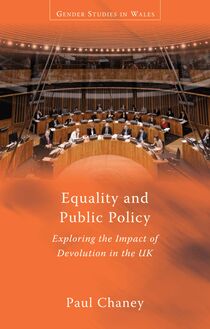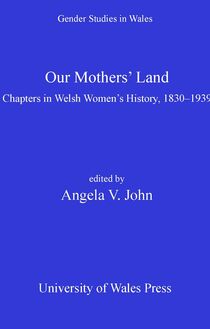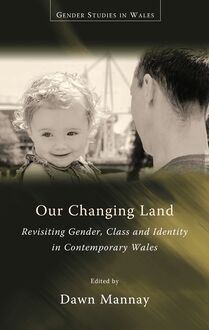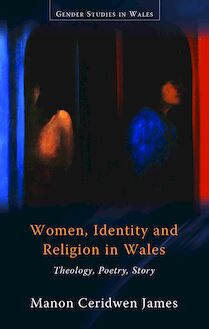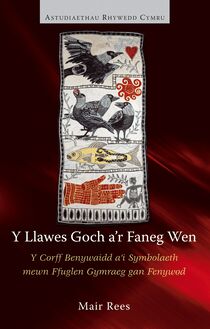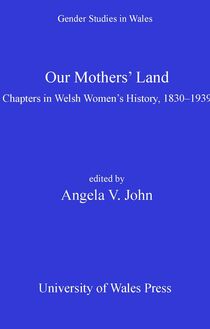-
 Univers
Univers
-
 Ebooks
Ebooks
-
 Livres audio
Livres audio
-
 Presse
Presse
-
 Podcasts
Podcasts
-
 BD
BD
-
 Documents
Documents
-
- Cours
- Révisions
- Ressources pédagogiques
- Sciences de l’éducation
- Manuels scolaires
- Langues
- Travaux de classe
- Annales de BEP
- Etudes supérieures
- Maternelle et primaire
- Fiches de lecture
- Orientation scolaire
- Méthodologie
- Corrigés de devoir
- Annales d’examens et concours
- Annales du bac
- Annales du brevet
- Rapports de stage
La lecture à portée de main
Découvre YouScribe en t'inscrivant gratuitement
Je m'inscrisDécouvre YouScribe en t'inscrivant gratuitement
Je m'inscrisEn savoir plus
En savoir plus

Description
The last two decades have seen big changes within a small nation; the distinctiveness of Wales, in terms of its political life and culture, has grown considerably in that time. This edited collection by a range of eminent Welsh writers, emerging academics and creative artists examines what is distinctive about Wales and Welshness in an interdisciplinary yet comprehensive manner. The core concepts of gender, class and identity are explored throughout the book, which presents twelve chapters in three distinct yet overlapping thematic sections: Wales, Welshness, Language and Identity, Education; Labour Markets and Gender in Wales; and Welsh Public Life, Social Policy, Class and Inequality. The chapters explore the role of men and women in Wales and of Wales itself as a nation, an economy, and a centre of partially devolved governance, raising questions related to equality, policy and progression. The collection also features photographs, graphic art and poetic verse that both represent and extend the central arguments of the book.
1. Introduction
– Dawn Mannay
SECTION ONE - Wales, Welshness, Language and Identity
2. Devolved Voices: Welsh Women’s Writing post 1999
– Jane Aaron
3 Only inside the classroom? Young people’s use of the Welsh language in the school, community and peer group
- Non Geraint
4. Who should do the dishes now? Revisiting Gender and Housework in Contemporary Urban South Wales
- Dawn Mannay
SECTION TWO – Education, Labour Markets and Gender in Wales
5. ‘Placing young men’: The performance of young working-class masculinities in the S1outh Wales Valleys
- Michael R.M Ward
6. Re-Educating Rhian: Experiences of Working-class Mature Student Mothers
- Melanie Morgan
7. Private lives used for public work: Women Further Education teachers in Wales
- Jane Salisbury
8. From low-wage manufacturing industries to the low-wage service sector: the changing nature of women's employment in Wales
- Caroline Lloyd
9. Changes and continuities: Women in paid work in Wales 1994-2014
- Alison Parken
SECTION THREE – Welsh Public Life, Social Policy, Class and Inequality
10. Class, Poverty and Politics in Devolved Wales
- Dave Adamson
11. Women and Policy-Making: Devolution, Civil Society and Political Representation
- Paul Chaney
12. The transformation of the media in Wales: technology and democracy
- Hugh Mackay
13. Wind Energy: Revisiting the Debate in Wales
- Karen Parkhill and Richard Cowell
14. Conclusion
- Dawn Mannay
Sujets
Informations
| Publié par | University of Wales Press |
| Date de parution | 15 juin 2016 |
| Nombre de lectures | 0 |
| EAN13 | 9781783168859 |
| Langue | English |
| Poids de l'ouvrage | 11 Mo |
Informations légales : prix de location à la page 0,0650€. Cette information est donnée uniquement à titre indicatif conformément à la législation en vigueur.
Extrait
-
 Univers
Univers
-
 Ebooks
Ebooks
-
 Livres audio
Livres audio
-
 Presse
Presse
-
 Podcasts
Podcasts
-
 BD
BD
-
 Documents
Documents
-
Jeunesse
-
Littérature
-
Ressources professionnelles
-
Santé et bien-être
-
Savoirs
-
Education
-
Loisirs et hobbies
-
Art, musique et cinéma
-
Actualité et débat de société
-
Jeunesse
-
Littérature
-
Ressources professionnelles
-
Santé et bien-être
-
Savoirs
-
Education
-
Loisirs et hobbies
-
Art, musique et cinéma
-
Actualité et débat de société
-
Actualités
-
Lifestyle
-
Presse jeunesse
-
Presse professionnelle
-
Pratique
-
Presse sportive
-
Presse internationale
-
Culture & Médias
-
Action et Aventures
-
Science-fiction et Fantasy
-
Société
-
Jeunesse
-
Littérature
-
Ressources professionnelles
-
Santé et bien-être
-
Savoirs
-
Education
-
Loisirs et hobbies
-
Art, musique et cinéma
-
Actualité et débat de société
- Cours
- Révisions
- Ressources pédagogiques
- Sciences de l’éducation
- Manuels scolaires
- Langues
- Travaux de classe
- Annales de BEP
- Etudes supérieures
- Maternelle et primaire
- Fiches de lecture
- Orientation scolaire
- Méthodologie
- Corrigés de devoir
- Annales d’examens et concours
- Annales du bac
- Annales du brevet
- Rapports de stage
